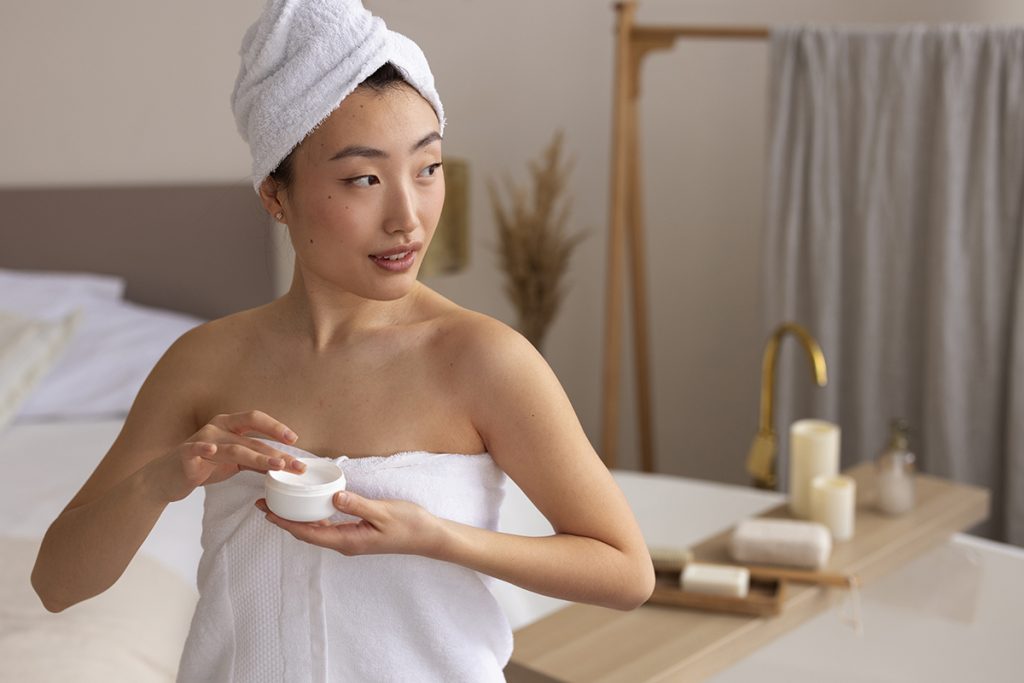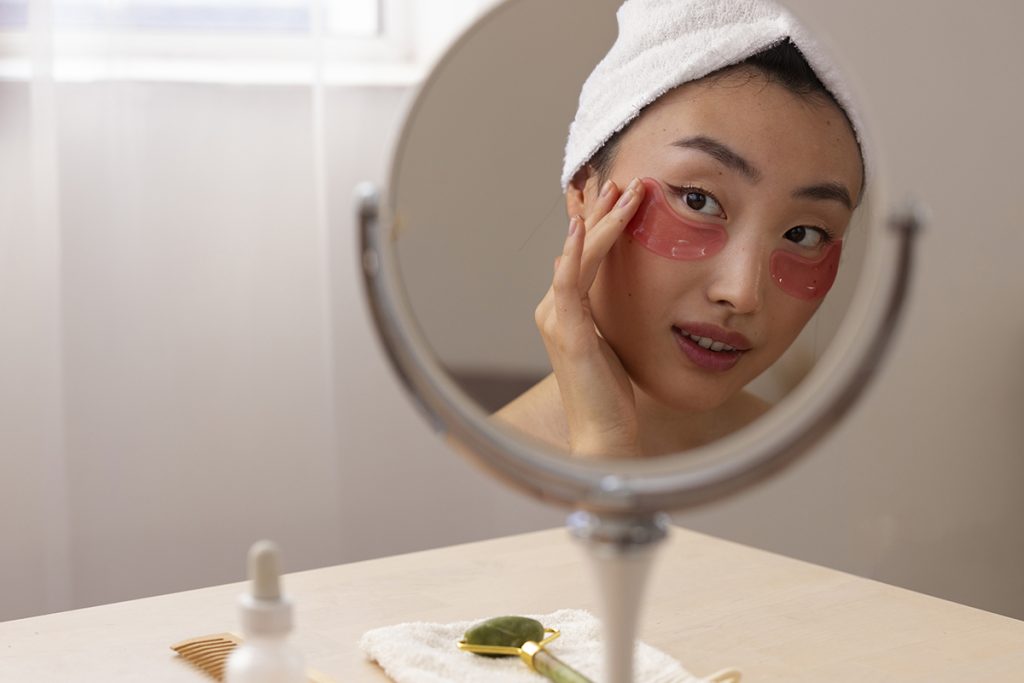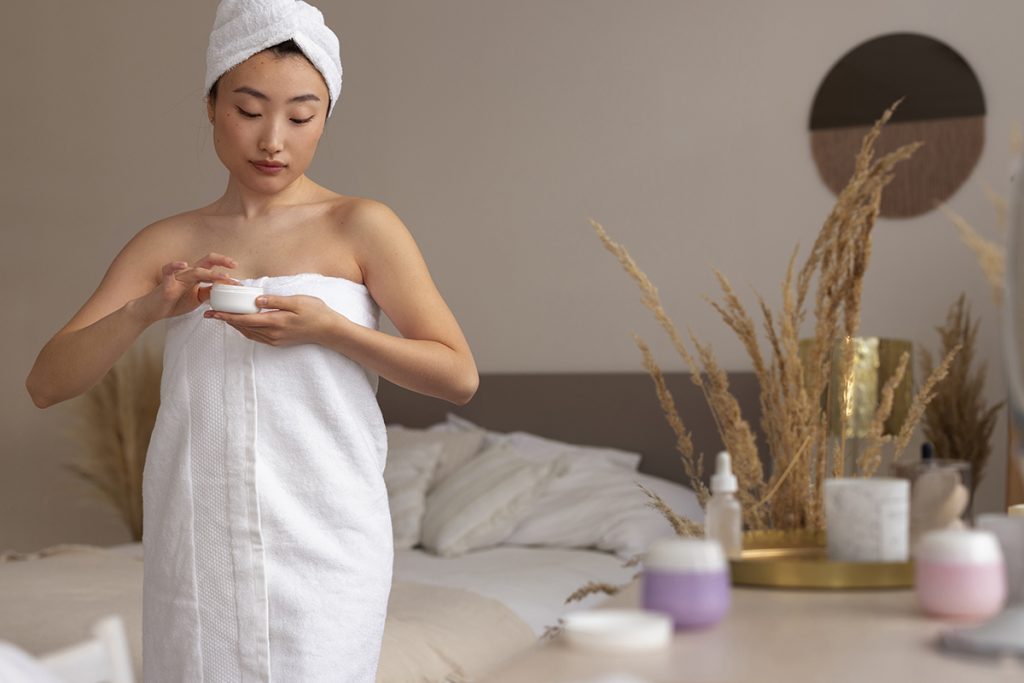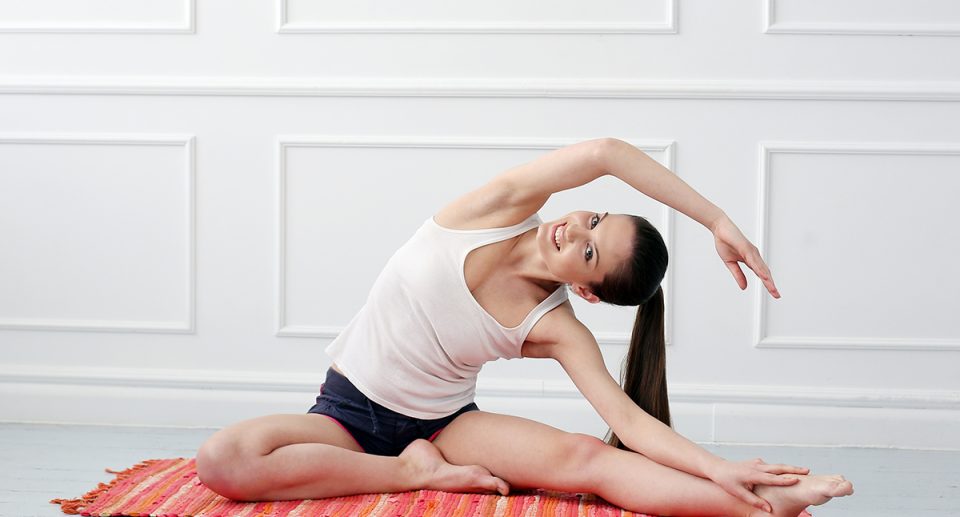K-beauty – Embrace Korean skincare for the best results!

Browse through beauty content on Instagram or TikTok, and you’ll likely come across a significant portion dedicated to, or at least influenced by, Korean skincare trends. Korean beauty, often referred to as K-beauty, encompasses skincare products, trends, and routines primarily developed in South Korea.
While this may seem niche, Korean beauty has profoundly impacted the skincare industry in Western countries over the past decade or so. Practices like sheet masking and double cleansing originated from K-beauty, along with the popular 10-step Korean skincare routine.
But how does it all work? What exactly are the eight- and ten-step Korean skincare routines? And for those busy (or lazy) days, a simple five-step skincare routine might be more feasible.
Korean skincare routine: The Korean approach to skincare
It may sound a bit excessive, but the majority of Korean women adhere to an eight to ten-step skincare routine daily. They do this to maintain healthy and radiant skin. Here are the essential steps for a Korean skincare morning routine:

K-Beauty morning routine
01. Cleansing with water. Begin your day by washing your face with water alone, skipping the cleanser. Water removes overnight dirt while providing natural hydration.
02. Toning. Use toner to balance your skin’s pH levels, preventing dryness and dehydration. It also enhances the absorption of subsequent products.
03. Essence. Essence serves as a blend between toner and serum, providing hydration and promoting cell renewal.
04. Ampoule. Ampoules, akin to serums but more concentrated, deliver potent active ingredients, acting as a beneficial boost for your skin.
05. Serum. Next, apply a targeted serum addressing specific concerns such as wrinkles, blemishes, or dehydration.
06. Eye cream. Gently apply a lightweight eye cream around the brow and under-eye areas. This delicate skin requires extra hydration and protection due to its thinness and lack of natural oils.
07. Moisturizer. Apply a thin layer of moisturizer to maintain hydration throughout the day.
08. Sun protection. Don’t forget your SPF! Even in winter, sunscreen is essential to shield your skin from harmful UV rays, preventing dark spots, wrinkles, and fine lines.

The simplified Korean skincare routine
Recognizing that the eight-step routine can seem overwhelming (and time-consuming!), Vicky offers a condensed version of the Korean skincare regimen. For those opting for a shorter routine, follow these five essential steps:
Cleansing with water, toner, serum/ampoule, eye cream, and moisturizer with SPF.
The K-beauty evening routine
If you’ve successfully navigated through the Korean skincare morning routine and the day, there’s still more to do in the evening. According to Korean skincare principles, you have ten more steps ahead, because Korean skincare all revolves around layering.
While ten steps may sound daunting, each serves a distinct purpose in maintaining youthful, healthy, and radiant skin. The first three steps are new additions, while the rest have been previously discussed or are self-explanatory.

Here’s the evening routine:
01. Oil-based cleanser – Effectively removes oil-based makeup and impurities.
02. Water-based cleanser – Double cleanse to remove any remaining residue.
03. Exfoliation (twice a week) – Clear clogged pores and enhance product absorption.
04. Toner
05. Essence
06. Ampoule
07. Serum
08. Sheet mask
09. Eye cream
10. Moisturizer.

K-beauty – Embrace Korean skincare for the best results!
In general, the fundamental steps in Korean skincare include cleansing, exfoliating, hydrating, and safeguarding the skin with sufficient broad-spectrum sunscreen. Additionally, Korean skincare often involves the use of sheet masks, essences, and overnight treatments.
However, each beauty routine varies (not always adhering strictly to 10 steps), emphasizing the importance of selecting products tailored to your skin’s specific requirements. For instance, individuals with dry skin should prioritize hydration, while those prone to blemishes should prioritize non-comedogenic ingredients.



















